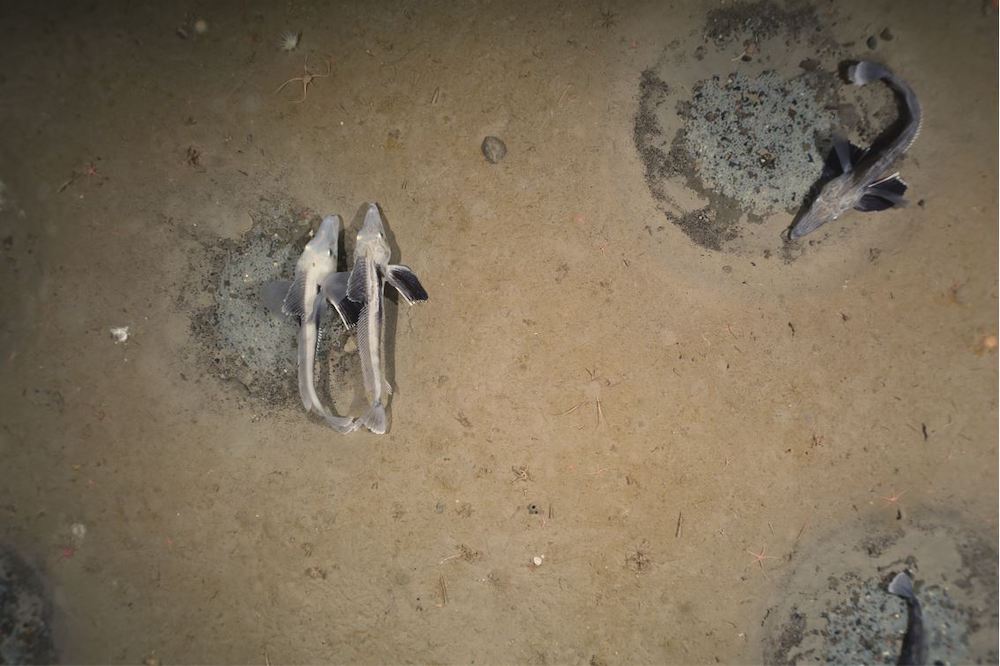Create a free profile to get unlimited access to exclusive videos, sweepstakes, and more!
60 million fish heat up the Antarctic ice at world’s largest breeding site
How exactly do you hide tens of millions of fish?

The Antarctic seas might as well be an alien planet for as much as we know about the ecosystem there. To date, only a small portion of the ocean floor there has been explored, made all the more difficult by thick sheets of ice.
Autun Purser from the Alfred Wegener Institute and Helmholtz Centre for Polar and Marine Research is a scientist studying the Antarctic ecosystem using cameras which plunge into the icy waters, returning images from its alien landscape. Last year he was on an expedition when a chance encounter led to a startling discovery, the results of which have been published in the journal Current Biology.
Purser was on the ship with 50 other scientists, and they’d spent the day retrieving instruments from mooring lines which measure the Antarctic currents. It’s a big job which took the better part of the day, but when it was done, he had a few hours to work on his own projects, so he sent down his cameras.
“I chose an area about 10 kilometers away and put the camera in the water,” Purser told SYFY WIRE. “As soon as I put the camera down, there were fish nests immediately. It was just by chance really.”
What Purser discovered was a massive communal nesting ground of icefish (Neopagetopsis ionah) spanning an area roughly 240 square kilometers. Scientists knew these fish built nests for their eggs but were totally unaware it happened on such a grand scale.
As far as we know it’s the largest natural fish breeding area in the world with an estimated 60 million nests spread out across an area 10 times the size of Manhattan. Living at such frigid temperatures beneath the sea ice makes for an unusual animal. N. ionah circulates blue or nearly transparent blood throughout its body, devoid of any hemoglobin. The temperatures are such that iron-based blood doesn’t work well, so they use copper instead. When the juveniles hatch, they make their way to where the water meets the ice and feed on populations of zooplankton which are abundant there before returning to the seafloor as adults. Not much else is known about these fish and Purser hopes continued observation with remote cameras will fill in some of the gaps in our knowledge.
The nests themselves are small circular bowls spaced a few meters apart. The fish construct their nests by swimming in a circle and disturbing the sediment. Softer materials float away leaving a bed of stones at the bottom.
“That’s important because even though it’s cold, they may still get bacterial attacks before the eggs hatch. Resting them on the rocks lets them stay aerated from water flowing through the box. It also stops creatures from coming up from below and eating the eggs. There are a lot of worms in these places that would love to eat these eggs,” Purser said.
Attacks from below aren’t the only thing N. ionah needs to worry about, however. Such a vast collection of fish makes for a tempting meal for other Antarctic predators. Seals concentrate themselves in the area and the team knows, from tracker data, that they’re foraging around the nesting site.
“The time when they’re nesting, that’s a huge, localized abundance. It’s really moving around the nutrient reserves in the area. Every model of life in the Weddell Sea has not considered icefish as a major component. Now we’ll have to redesign the models,” Purser said.
The fish, for their part, do what they can to keep the seals on their toes, so to speak. Instead of nesting in the same place forever, they follow a lens of slightly warmer water which moves around the Antarctic Sea. The water temperature is only about 2 degrees warmer than surrounding waters and isn’t thought to make much of a difference to the fish in terms of comfort, resources, or egg development. Instead, it’s believed they use it as a navigational aid for finding one another.
“We also found zooplankton above an area to the west, above dead nests where there’s not a single fish. The food is still over there that the fish would like, but they’re not living there,” Purser said.
Purser only had a limited opportunity to observe the nests before leaving the site, but he left a couple of cameras behind which will take pictures over the next two years in the hopes of better understanding this novel Antarctic environment.


























